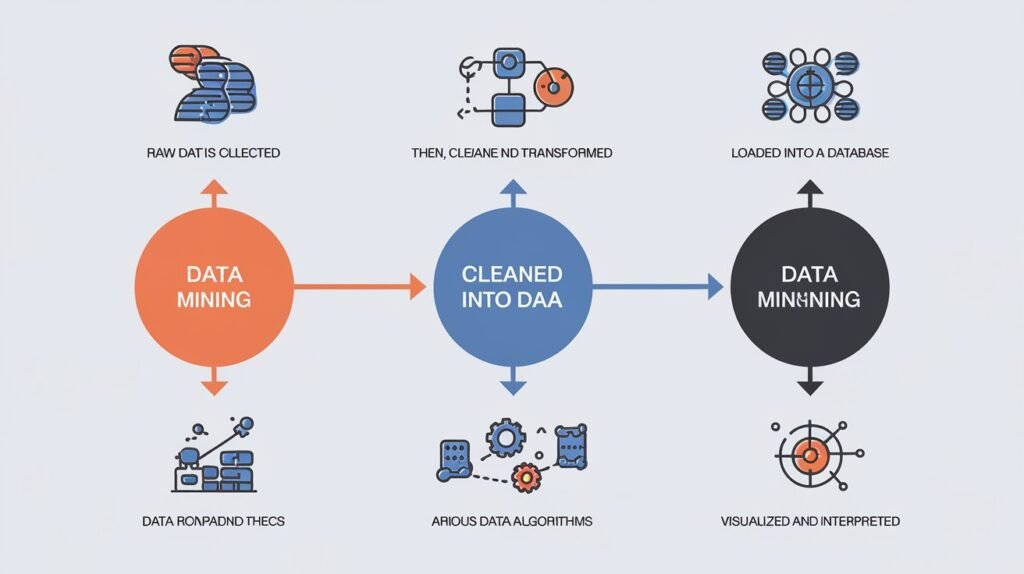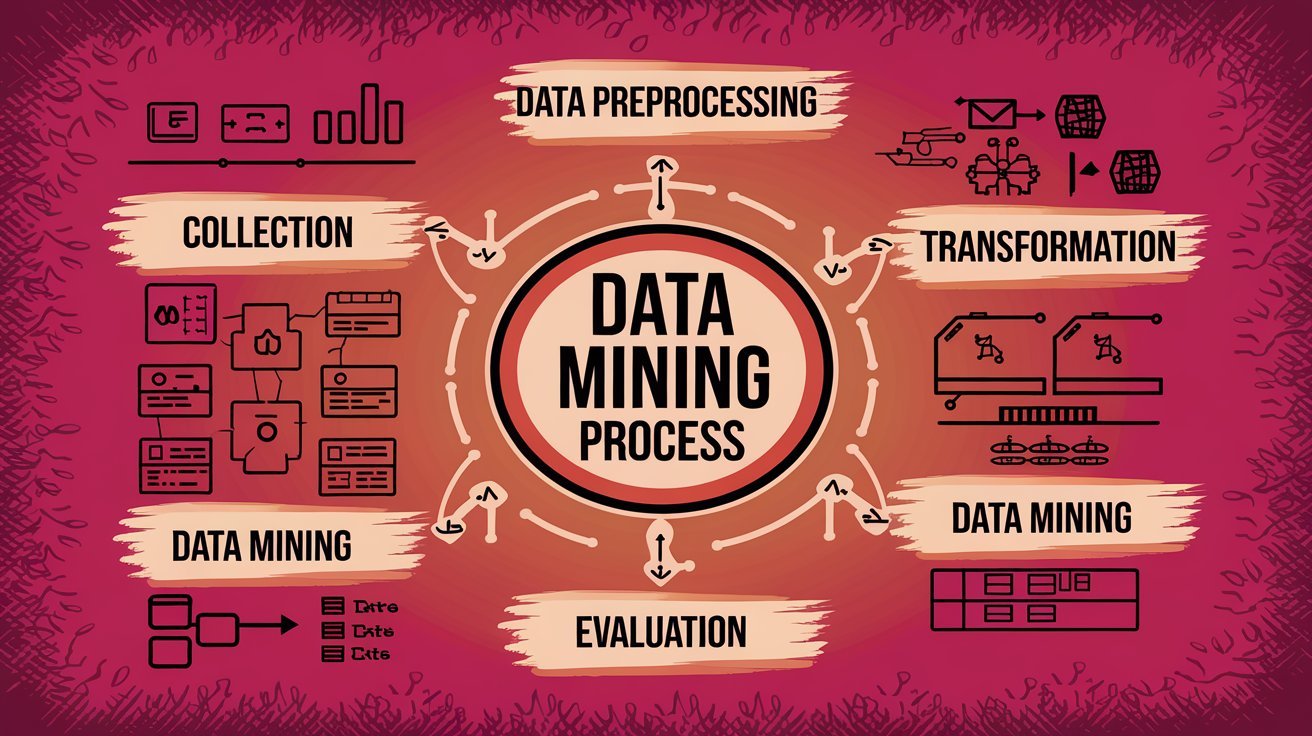Data mining is the process of discovering meaningful patterns, correlations, and insights from large datasets using statistical and computational techniques. It plays a crucial role in decision-making, allowing organizations to leverage data to understand customer behavior, forecast trends, and improve operational efficiency. The rise of big data and the advancement of technology have made data mining a key tool for businesses, governments, and researchers to derive actionable insights.
- How Data Mining Works
The process of data mining involves several steps, including:
- Data Collection: Gathering large amounts of raw data from various sources such as databases, customer interactions, social media, sensors, and online transactions.
- Data Cleaning: Preparing the data by removing inconsistencies, duplicates, and incomplete records to ensure data quality.
- Data Transformation: Converting raw data into a usable format by normalizing, aggregating, or categorizing it, making it suitable for analysis.
- Pattern Recognition: Using algorithms and models (e.g., classification, clustering, and regression) to identify hidden patterns and relationships within the data.
Data Interpretation: Analyzing the patterns to derive insights, make predictions, and guide decision-making.

- Applications of Data Mining
Data mining has a wide range of applications across various industries:
- Retail and E-Commerce: Businesses use data mining to understand customer buying behavior, optimize product recommendations, and forecast inventory demand.
- Finance: Financial institutions leverage data mining to detect fraud, assess credit risks, and enhance customer portfolio management.
- Healthcare: In healthcare, data mining helps in identifying disease patterns, improving patient care, and predicting medical outcomes.
- Telecommunications: Data mining is used to enhance customer retention, predict network issues, and develop personalized service plans.
- Manufacturing: Companies use it to predict equipment failures, streamline production processes, and reduce downtime.

- Benefits of Data Mining
- Informed Decision-Making: Data mining provides businesses with the insights they need to make better, data-driven decisions.
- Increased Efficiency: By identifying inefficiencies in operations, data mining helps improve productivity and streamline processes.
- Enhanced Marketing Strategies: It allows businesses to create personalized marketing campaigns by analyzing customer behavior and preferences.
- Risk Management: Data mining helps identify potential risks and mitigate them before they become significant issues.
Competitive Advantage: By understanding market trends and customer needs, businesses can stay ahead of the competition.

- Challenges in Data Mining
- Data Quality: Inaccurate, incomplete, or inconsistent data can skew results and lead to incorrect conclusions.
- Data Privacy: Collecting and analyzing large amounts of data raises concerns about privacy, especially with sensitive information.
- Scalability: Handling massive datasets requires advanced tools and infrastructure that can process large volumes of data in real-time.
- Complexity of Algorithms: Understanding and implementing complex algorithms can be challenging without the right expertise.
Cost: Implementing data mining systems can be expensive, requiring investment in software, infrastructure, and skilled professionals.

FAQ’s
What is data mining?
Data mining is the process of analyzing large datasets to discover patterns, trends, and insights that can be used to make better decisions.
How is data mining different from data analysis?
While both involve analyzing data, data mining specifically focuses on discovering hidden patterns and predicting future trends, often using automated tools and algorithms.
What are some common techniques used in data mining?
Common techniques include classification, clustering, regression, association rule learning, and neural networks.
What industries use data mining?
Data mining is used in various industries, including finance, healthcare, retail, telecommunications, and manufacturing.
Is data mining ethical?
It can be, as long as organizations ensure they have consent from users, maintain transparency, and prioritize data privacy and security.
What tools are used for data mining?
Popular tools include R, Python, SAS, SPSS, KNIME, and RapidMiner, which offer a variety of algorithms and capabilities for data mining tasks.
Can data mining be automated?
Yes, many data mining processes can be automated using machine learning algorithms and artificial intelligence to analyze data at scale.
What are the limitations of data mining?
The main limitations include data quality issues, privacy concerns, the complexity of algorithms, and the cost of implementation.

